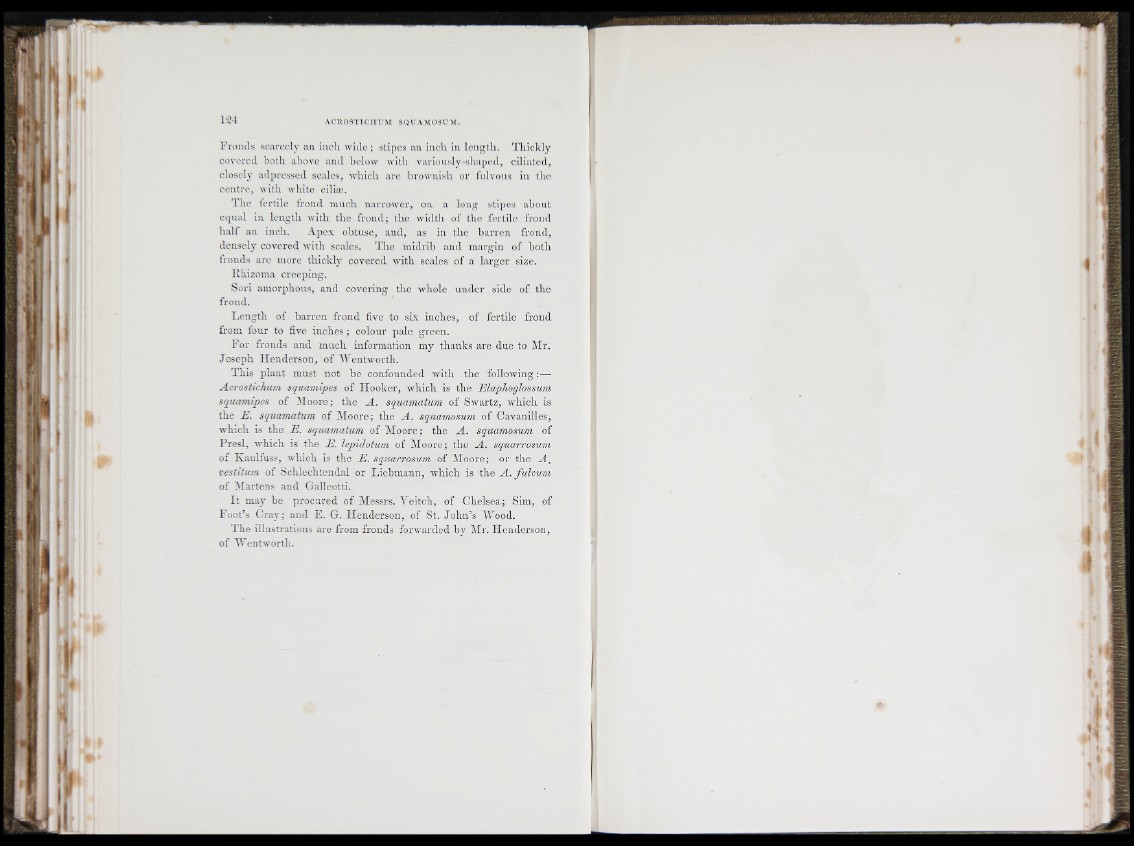
ll
•ill
m
ii,
Fromls soavoolv rtu iiu-h w id e ; stipes an liicli iu leiigtli. 'riiickly
oovoi'od both above and below with vaa-iously-shapc'd, clUatod,
closely adpressed scales, wliieli are brownish or I’ulvous in tho
centre, with white eilia \
The tertilo irond mueh narrower, on a long stipes about
equal iu length with the frond; tho -wudth of the fertile frond
h a lf an inch. A pex obtuse, and, as in the b a rren Ifond,
densely covered with scales. The midrib and margiu of b oth
fronds are more thickly covered with scales of a larg e r size.
Rhizoma crccjiiug.
Sori amorphous, and covering the whole u n d e r side of the
frond.
L en g th of b a rren frond five to six inches, of fertile frond
from four to five in c h e s ; colour ¡Jalo green.
F o r fronds and much iuforniation my thanks arc due to Mr.
Joseph H en derson, of Wentworth.
This plan t must not be confounded with the follow in g :—■
Acrostichum squamipes of Hooker, which is the Elaqftoglossum
squamipes of Aloore; the A . squamatum of Swartz, which is
the E . squamatum of Aloore; the A . squamosum of Cavanilles,
which is the E . squamatum of Aloore; the A . squamosum of
Pre sl, which is the E . lepidotum of Aloore; the A . squarrosum
of Kaulfuss, which is the E . squarrosum of Aloore; or the A ,
te s titum of Sciilechtendal or Liebmann, which is the A . fu lo um
of Alartens and Galleotti.
I t may be pro cu red of Alessrs. Veitch, of Chelsea; Sim, of
F o o t’s C ray ; and F . G. H en derson, of St. Jo h n ’s Wood.
T h e illustrations are from fronds forwarded by Air. Henderson,
o f AVentworth.